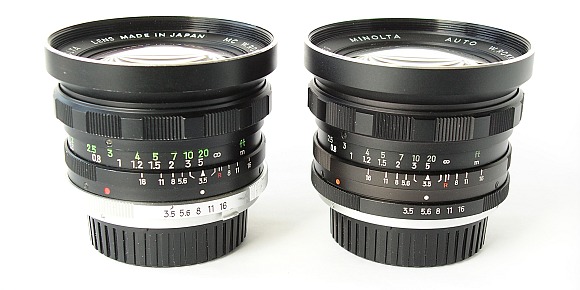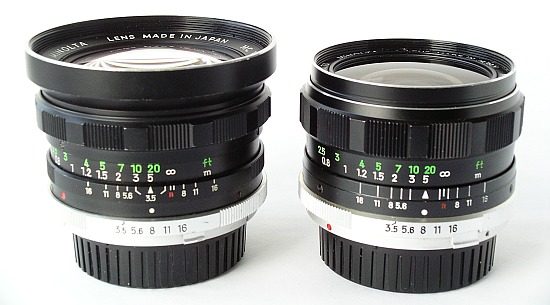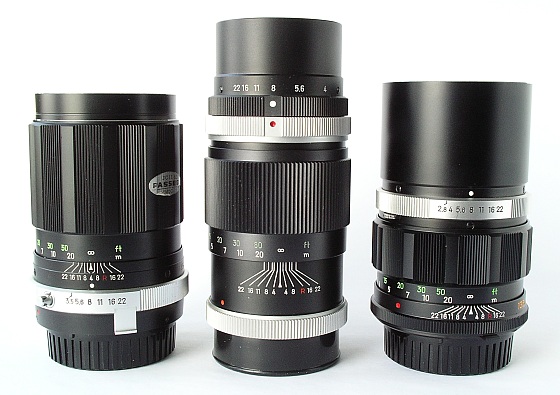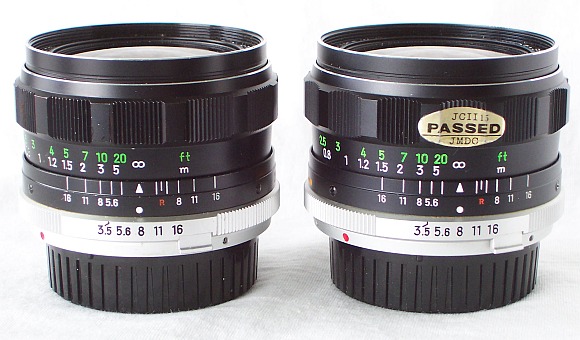|
|
Minolta MC Rokkor lenses |
|
|
||||||||||||||||||||
|
|
When Minolta introduced the SR-T101 in 1966 with built in metering
through the lens (TTL) as an logical succession to the SR-7 which
also had a built in meter, this might be seen today as a small step in
the development of the SRL camera. But when the SR-7 had a
meter that looked through an eye of the side of the camera,
coincidence metering as it's called, the SR-T101 not only measured
the light coming through the lens, the real evolution was that the
metering took place with the aperture fully open.
Most of the lenses of the MC Rokkor line was transformed from
previous Auto Rokkor lenses, and the optical design was carried
over with the addition of the MC tab to signal the aperture set on
the lens.
During the production of the MC Rokkor line some of the lenses was
modified with new optical design and when that affected the size of
the lens, it was also changed in appearance.
New lenses was added to the MC Rokkor line like the first Fisheye lens, the Rokkor 18mm 1:9.5 fullframe Fisheye and MC Tele Rokkor-QD 135mm 1:3.5 lens which suppleanted the older Rokkor-TC 135mm 1:4.0 tele lens for those looking for a more economical choice.
Some time before 1970 the MC Rokkor line got a new slightly altered cosmetical appearance. The focusing grip of the second generation of MC had knuckled shaped knurles and was much wider, the first MC generation had longer focusing grip unless the barrel of the lens was short.
It is worth mentioning that Minolta that had been a forerunner in developing anti reflective coating of lens surfaces continually developed and enhanced the anti reflective properties of their coating of lenses. That technology made great strides too, but did not change dramatically with the introduction of each generation of lenses.
The MC Rokkor line was a high quality line of lenses from Minolta
with high finish and technical standards. The MC Rokkor line placed
Minolta at a technical refinement ahead of its main competition. It
cannot be stretched enough that this level of technical development
took years for Minolta's competitors to catch up to the same level of
advancement.
|
|
|
||||||||||||||||||||
|
|
Copyright © 2005, Henrik W. Robeck, 18 July 2005 |
|
|






